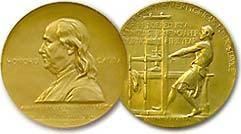 | ||
Winners & Nominees T Christian Miller, T Christian Miller, Winner, Ken Armstrong, Ken Armstrong, Winner, Jonathan D Rockoff, Jonathan D Rockoff, Nominee, Colin Woodard, Colin Woodard, Nominee, Ed Silverman, Ed Silverman, Nominee, Jeanne Whalen, Jeanne Whalen, Nominee, Peter Loftus, Peter Loftus, Nominee, Joseph Walker, Joseph Walker, Nominee, Zachary Mider, Zachary Mider, Winner, Lindsay Pierce, Lindsay Pierce, Nominee, John Ingold, John Ingold, Nominee, John Shiffman, John Shiffman, Nominee, Joan Biskupic, Joan Biskupic, Nominee, Janet Roberts, Janet Roberts, Nominee, Joe Amon, Joe Amon, Nominee, Eli Saslow, Eli Saslow, Winner, Les Zaitz, Les Zaitz, Nominee, Dennis Overbye, Dennis Overbye, Nominee, Hiroko TabuchiNYT, Hiroko Tabuchi, Winner, Bill VlasicNYT, Bill Vlasic, Winner, John MarkoffNYT, John Markoff, Winner, David KocieniewskiNYT, David Kocieniewski, Winner, David SegalNYT, David Segal, Winner, David BarbozaNYT, David Barboza, Winner, Charles DuhiggNYT, Charles Duhigg, Winner, Steve LohrNYT, Steve Lohr, Winner, David StreitfeldNYT, David Streitfeld, Winner, The New York Times, The New York Times, Nominee, David Kocieniewski, David Kocieniewski, Winner, The Wall Street Journal, The Wall Street Journal, Nominee, Tom FrankUSA Today, Tom Frank, Nominee | ||
The Pulitzer Prize for Explanatory Reporting has been presented since 1998, for a distinguished example of explanatory reporting that illuminates a significant and complex subject, demonstrating mastery of the subject, lucid writing and clear presentation. From 1985 to 1997, it was known as the Pulitzer Prize for Explanatory Journalism.
Contents
- List of winners for Pulitzer Prize for Explanatory Journalism
- List of winners for Pulitzer Prize for Explanatory Reporting
- References
The Pulitzer Prize Board announced the new category in November 1984, citing a series of explanatory articles that seven months earlier had won the Pulitzer Prize for Feature Writing. The series, "Making It Fly" by Peter Rinearson of The Seattle Times, was a 29,000-word account of the development of the Boeing 757 jetliner. It had been entered in the National Reporting category, but judges moved it to Feature Writing to award it a prize. In the aftermath, the Pulitzer Prize Board said it was creating the new category in part because of the ambiguity about where explanatory accounts such as "Making It Fly" should be recognized. The Pulitzer Committee issues an official citation explaining the reasons for the award.
